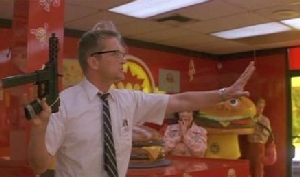When I arrived to pick up the order, I waited and waited and waited. Granted, it was a snowy Monday night, but I finally called inside to inquire about my order. Moments later, the manager appeared. His apology blew me away. He not only apologized (and acted like he really meant it), but he also sympathized with me and said, “I take complete responsibility, and of course, your meal is on me.”
I was at a complete loss. He had derailed my frustration and doubled my loyalty in one simple sentence. All I could say was, “OK. Thank you.” I didn’t even complain.
I was reminded of work I did years and years ago about customer problem solving. It is as true now as it was then. Ultimately, it all boils down to four simple things: ASAP – Apologize, Sympathize, Accept the Criticism (without excuses) & Problem Solve.
Apologize: It seems obvious, but it couldn’t be more important. I sometimes think that (for liability reasons, or the fact that they are not the responsible party) people are reluctant to apologize. But a simple “I’m sorry for your inconvenience” doesn’t imply responsibility and does defuse the frustration that motivates the complaint.
Sympathize: We all know how frustrating restaurant problems can be — especially a carryout problem which is often not discovered until the guest arrives home — especially now as people are cutting back on their dining out dollars for economic reasons. The question remains: “Is it really worth it?”
Accept the Criticism: It’s tempting to give the reasons why the problem happened. Not only do customers not care about the reason, but it actually sometimes angers guests because it feels more like an excuse than an apology. (Okay, I know that sometimes there really is a good excuse…a power outage or short staffing…and you just can’t help yourself.) If you do give a reason, follow up by acknowledging their point of view: “But that’s no excuse.” The more you understand it from the guest point of view, the more likely the apology will be taken in the sincere way you intend it.
Problem Solve: Ironically, this is sometimes the least important of the four steps. How many times have you had guests say to you, “No, I really don’t want anything in return.” Honestly, from my conversations with customers over the years, they really mean it. I read a statistic years ago that suggested that if you are sympathetic to their concerns, 5 out of 6 people will come back even if you can’t solve their problem. I believe it.
And above all else, do it quickly: ASAP. The sooner a problem is solved, the more it will seem to guests almost as though it didn’t happen. Competition for this smaller pool of dining dollars is intense, and the “best of the best” are taking this opportunity to be “brilliant at the basics.”
Until next time, I’d love to hear your thoughts.